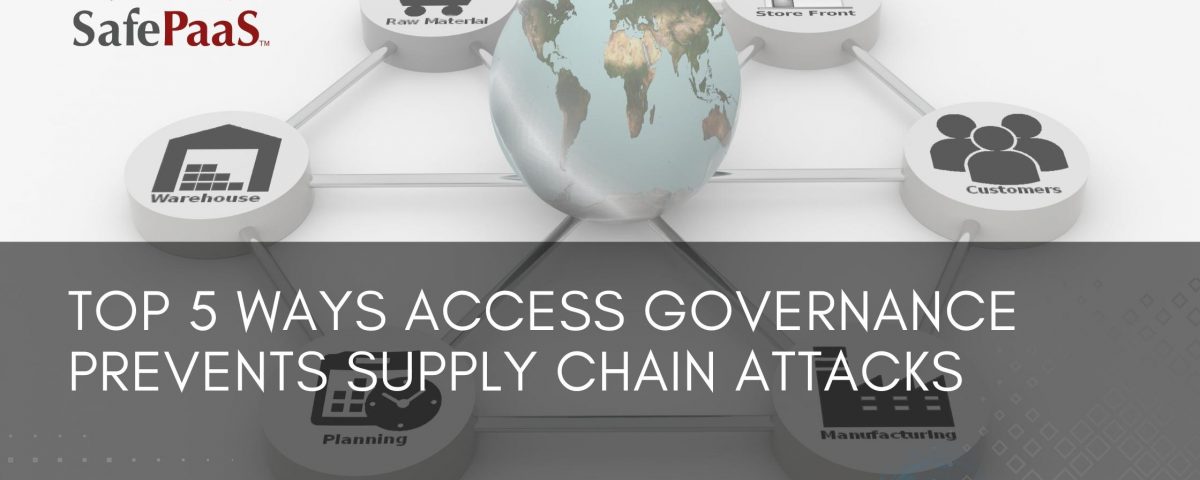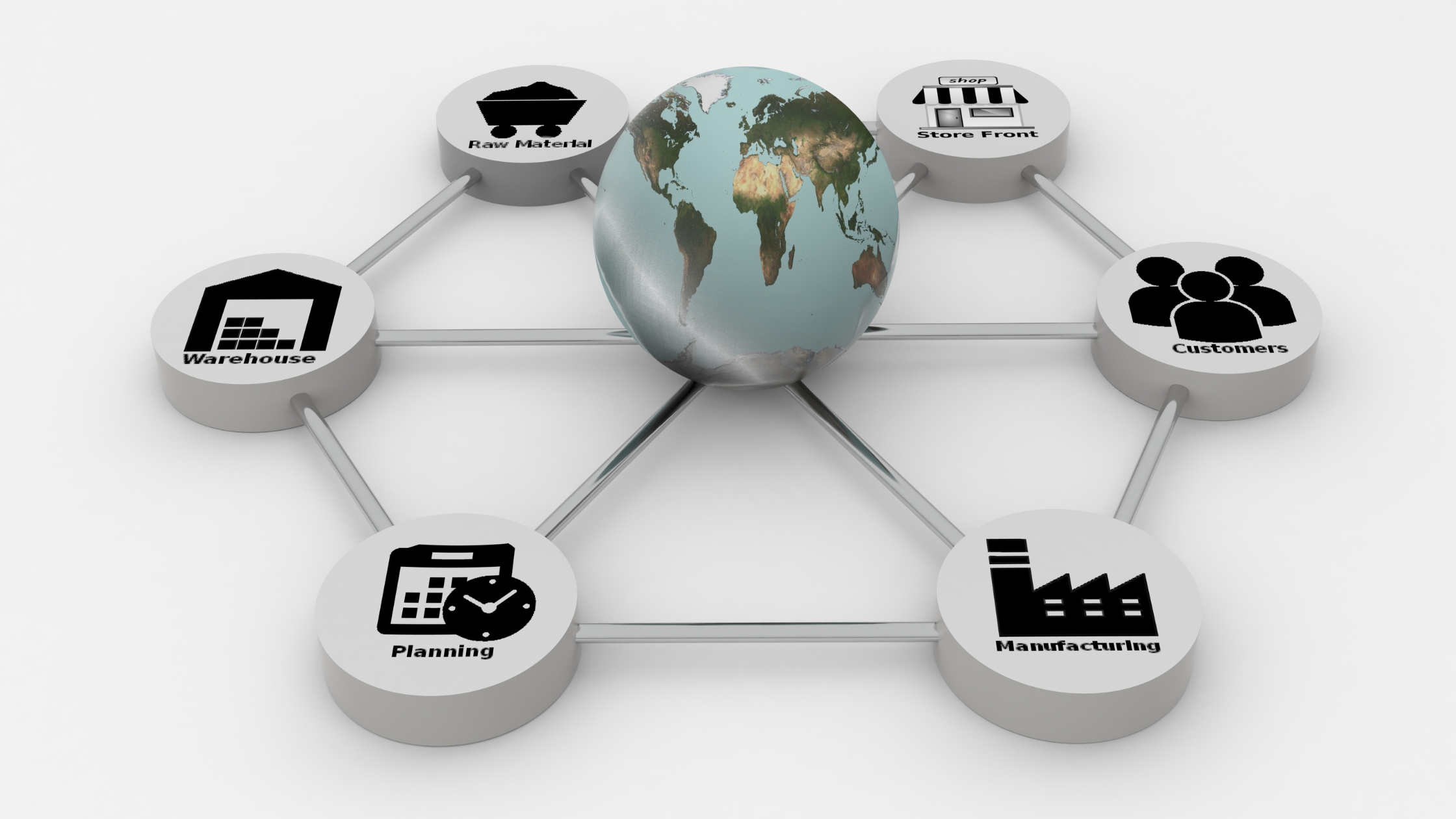Prevent supply chain attacks with access governance


Top 5 ways access governance prevents supply chain attacks
In today's interconnected digital landscape, organizations rely heavily on their supply chains to deliver products, services, and software solutions. However, this increasing dependence on third-party suppliers and vendors introduces a significant cybersecurity risk: the threat of supply chain attacks.
According to CSO Online, the risk of supply chain attacks in 2022 involving malicious third-party components increased by 633% to over 88,000 known instances in 2022. And the financial impact of these attacks is expected to reach $6 trillion this year alone.
Supply chain (aka third-party) attacks target the vulnerabilities of trusted relationships within your supply chain to infiltrate your organization's network and wreak havoc on operations, data, and infrastructure. To protect your organization against this growing threat, your best defense is implementing strong access governance controls. Access governance provides a framework for controlling and monitoring access to critical systems, data, and resources, ensuring that only authorized users and entities can interact with your supply chain ecosystem.
What is a supply chain attack?
Today's workforce has changed. Contractors and supply chain vendors now comprise a large percentage of your systems' identities, and managing them is no small feat. Your organization likely has more suppliers, service providers, and technologies with access to your sensitive data than ever. The risks are high, with an astounding 90% of IT professionals having experienced a cybersecurity breach.
Supply chain attacks are attacks against third-party relationships in which an unsecured supplier is attacked to gain access to their larger partners. In the 2022 attack against Red Cross, the threat actor accessed a third-party contractor and saw more than half a million records compromised – including documents that the Red Cross classed as "highly vulnerable."
Why you should worry about supply chain attacks
Every third-party partnership your organization engages in is a potential path for attack making supply chain security of paramount importance, including:
Protecting confidentiality: Supply chains involve exchanging sensitive information, intellectual property, and proprietary data between your various entities, suppliers, manufacturers, distributors, and customers. A breach in your supply chain can lead to unauthorized access to this confidential information, resulting in financial loss, reputational damage, and a competitive disadvantage.
Safeguarding integrity: Supply chain attacks can compromise the integrity of your products and services. Malicious actors may introduce counterfeit components, tamper with software or hardware, or inject malware into your supply chain. This can lead to compromised systems, data breaches, operational disruptions, and potential end-user harm.
Ensuring availability: Disruptions in your supply chain can lead to the unavailability of critical products or services. And attacks on your supply chain, such as distributed denial-of-service (DDoS) attacks, can cripple systems, leading to prolonged downtime and financial losses. Ensuring a secure supply chain helps you maintain the availability of goods and services, especially in the healthcare, energy, and transportation sectors.
Mitigating financial risks: Supply chain attacks can have significant financial implications. Your organizations may face direct financial losses due to stolen assets or operational disruptions. The costs of investigating and remediating a supply chain breach, managing the reputational fallout, and potential legal consequences can be substantial. Your organization can mitigate these financial risks by investing in supply chain security.
Protecting reputation: A successful supply chain attack can severely damage your organization's reputation. Customers and partners trust that the products or services they receive are genuine, secure, and reliable. A breach in your supply chain can erode that trust, leading to customer dissatisfaction, loss of business, and long-term damage to your brand's reputation.
Regulatory compliance: Many industries have specific regulatory requirements and standards related to supply chain security. Organizations must comply with these regulations to avoid legal consequences, penalties, or loss of certifications. Organizations prioritizing supply chain security can meet regulatory obligations and demonstrate their commitment to protecting customer data and privacy.
Given the interconnected nature of today's global supply chains, your organization must proactively address supply chain security risks to protect its assets, customers, and reputation. It requires collaboration, strong access governance policies, regular access certifications, implementation of robust security controls, and continuous monitoring and improvement of those controls to mitigate the evolving threat landscape.
Top 5 ways access governance prevents supply chain attacks
Access governance plays an essential role in preventing and mitigating attacks on your supply chain. By implementing strong access governance policies, your organization can ensure that only authorized users and accounts can access critical systems, data, and resources. Here's how access governance can help your organization to stop supply chain attacks:
Policy-Based Access Control (PBAC): PBAC is a method of access governance that assigns permissions and privileges based on access policies within an organization. By defining clear policies and access levels for roles involved in the supply chain, your organization can enforce the principle of least privilege, granting only the necessary permissions to users to perform specific tasks. This limits the potential damage caused by compromised accounts or insider threats within your supply chain.
Privileged Access Management (PAM): PAM enforces strict controls over your privileged users and accounts. These accounts have elevated access rights and are frequently targeted by attackers to gain control over systems and networks. By securing and managing privileged accounts with strong authentication, access controls, and session monitoring, PAM reduces the chances of unauthorized access and misuse, preventing supply chain attacks that rely on compromised accounts.
Identity access management: Your organization should closely manage and control the access it grants to users, suppliers, and vendors because unauthorized access is the leading infection vector for breaches. This includes implementing a robust onboarding and offboarding process by defining access rights and restrictions based on the principle of least privilege. Regular monitoring and access certification can also help you detect unauthorized or suspicious activities.
Continuous controls monitoring and auditing: Implementing monitoring and auditing your ITGCs allows your organization to track and review access activities within your supply chain. Monitoring access logs can detect suspicious behavior or unusual patterns quickly, indicating a potential supply chain attack. Regular audits help identify access-related issues, such as excessive privileges or unauthorized access, which can be addressed promptly.
Segregation of Duties: Implementing segregation of duties ensures that no single individual within the supply chain has excessive or conflicting privileges. Separating responsibilities and requiring multiple individuals to complete critical tasks reduces the risk of unauthorized access or malicious activities. This prevents a single compromised account from fully controlling the supply chain.
Access governance practices, including PBAC, Privileged Access Management, Identity Access Management, monitoring and auditing, and segregation of duties, collectively contribute to securing your supply chain against potential attacks. By implementing these measures, your organization can enforce strong access controls and minimize the risk of unauthorized access, reducing the likelihood of successful supply chain attacks.
Want to learn more about how SafePaaS can protect your supply chain?
Recommended Resources

Control Third party access risk
You're not alone if your organization frequently provides vendors, suppliers, contractors, and non-staff members access to internal networks and systems. Organizations are increasingly dependent on third-party vendors to deliver business-critical products and services. However, your organization takes on enormous risks every time you provide access to a third party.

The policy-based IGA Guidebook
The RBAC approach assigns access too simplistically. Policy-based IGA boosts security by enabling flexible, fine-grained identity governance, ensuring the right people receive the appropriate access to the correct data and system. With policy-based IGA, your business will operate smoothly while easily meeting compliance obligations.

The Definite Guide to Modern IAM - IGA, IAM and PAM
Integrating IGA, AM, and PAM creates a central hub of policy, governance, and enforcement of identity security. With an integrated policy-based approach, a privileged access request can be managed within the organization’s IGA policies. Privileged access requests and approvals are part of the access control chain of authority, making privileged access more easily auditable.

